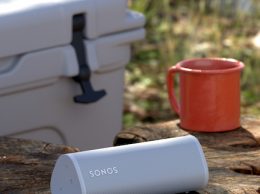Sonos makes privacy a priority by buying Snips
IN THIS ARTICLE
- Earnings Topic
- Marissa Nall Author
By Marissa Nall Friday, November 29th, 2019
Sonos has made a $37.5 million bid to enter the voice assistant market, even as tariffs are poised to make a $30 million dent in its bottom line in its new fiscal year.
The acquisition of Paris-based AI platform Snips puts a focus on privacy as it seeks to improve customers’ experience using voice assistants to stream sound. Meanwhile, tariff headwinds didn’t dull analysts’ expectations for overall growth for the company.
As Sonos’s first acquisition as a public company, the deal is relatively modest in size, “but it’s really to improve the functionality of the voice assistant that’s built into their voice controlled speaker,” said Robert Muller, equity research analyst with RBC Capital Markets.
“That’s a pain point for customers,” he said. Voice assistants “are very good and can do a wide breadth of things, but they’re not very accurate. They’re much more a mile wide than a mile deep.”
As an “edge” platform, computing for Snips voice commands happens on the device itself, rather than sending voice data to a cloud-based system.
Calling it a “private-by-design” technology, Sonos said Snips is built to run alongside other AI voice assistants, rather than replacing them. The cash acquisition closed Nov. 14, according to filings by the company.
CEO Patrick Spence said the Snips team “will bring expertise and strategic intellectual property that will make the voice experience on Sonos even better.”
“It really is a talent acquisition,” Muller said, noting that two-thirds of the company’s research and development spending goes toward software development. “Most of the purchase price is going toward acquiring a team of engineers.”
It also capitalizes on Sonos’s strong track record of getting incremental new products into customers’ homes.
“The better they can make the streaming experience, the more likely you are to support through word-of-mouth advertising,” or make a repeat purchase, he said.
The company reported $294 million in revenue for the fourth quarter, bringing it up to $1.26 billion for the full fiscal year, nearly 11 percent higher than 2018.
Net losses ballooned to $29.6 million during the quarter, or 28 cents per share, up from $1.72 million the previous fourth quarter and missing consensus analyst estimates of 21 cents per share. For the full year, Sonos lost $4.77 million, down 70 percent from $15.6 million in net losses the prior year.
Sonos’ guidance for the fiscal year was hampered by an ongoing trade dispute between the U.S. and China that has added a 15 percent tariff to its products.
With the tariffs unlikely to end before the holiday sales season, Sonos CFO Brittany Bagley said the fees will carve $30 million off its bottom line in fiscal 2020.
Efforts to shift manufacturing to Malaysia through its existing contractors are expected to be completed within a year, and Bagley said the company will not raise prices on its products in the meantime.
Excluding the tariff impacts, adjusted earnings will likely reach 20 percent annual growth targets, she said, topping $100 million. Including the added costs, the company revised its earnings guidance down to $72 million to $82 million for the year, compared to $89 million in fiscal 2019.
“We expect investors will look beyond the tariff headwind and focus on Sonos’ long growth runway, strong customer repeat purchases and growing ecosystem,” that should sustain the 10 percent revenue growth the company reported, Morgan Stanley equity analyst Katy Huberty said in a note to investors.
Sonos stock closed Nov. 26 at $14.72, up 12.5 percent in November and nearly 50 percent year-to-date.
The company ended the fiscal year with a hefty cash cushion of $338.6 million, which could provide dry powder for additional acquisitions. It also announced a $50 million share buyback program that received approval from its board of directors in September.
The Snips acquisition and buybacks demonstrate an “evolution” of Sonos’s capital allocation strategy, Huberty said.
In addition to pricing in a shorter holiday season, the company’s guidance also remained conservative, factoring in macro uncertainties in Europe, Africa and the Middle East, she said.
Sonos said it added a record 1.7 million new households in the year ended Sept. 29, bringing it to around 9 million households using its products, with an average of 2.9 registered products in each household.
The guidance helped alleviate concerns that lower-priced component products for its Ikea partnership would put pressure on sales, Muller said. Though still in early days, the release of the new in-furniture offerings could help it reach new customers with its high-end products and drive repeat sales.
“There’s a bigger market once you move outside the home for audio. It’s a good way for them to sort of test the waters,” Muller said of the company’s first portable speaker, the Sonos Move. While the results for the new products are still very early, “if you can get people into the ecosystem and sell an additional sound bar or product to those new customers, it would be good for them.”
• Contact Marissa Nall at [email protected].











